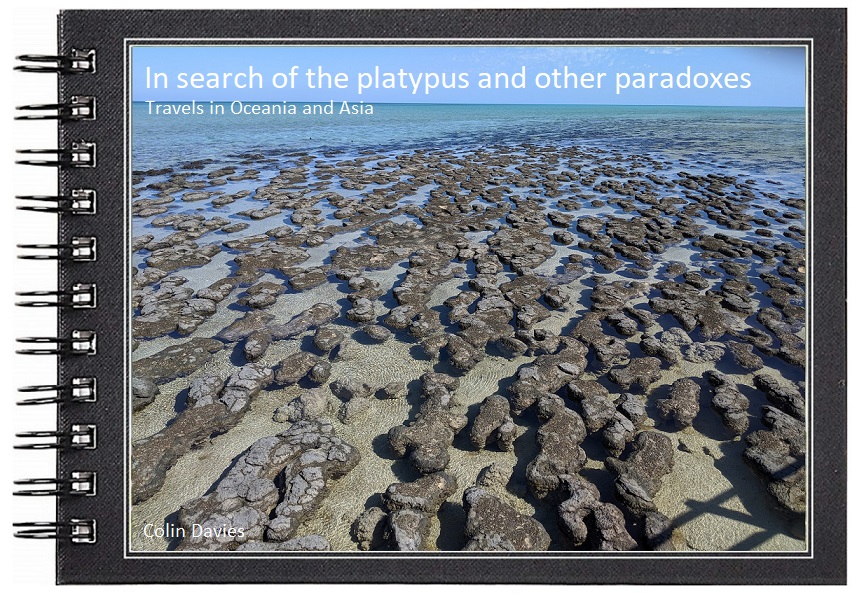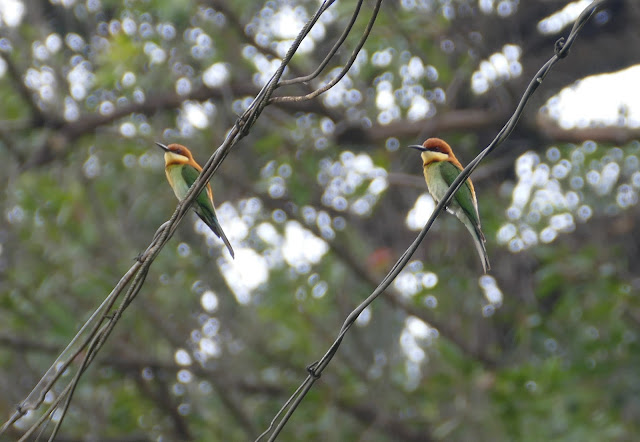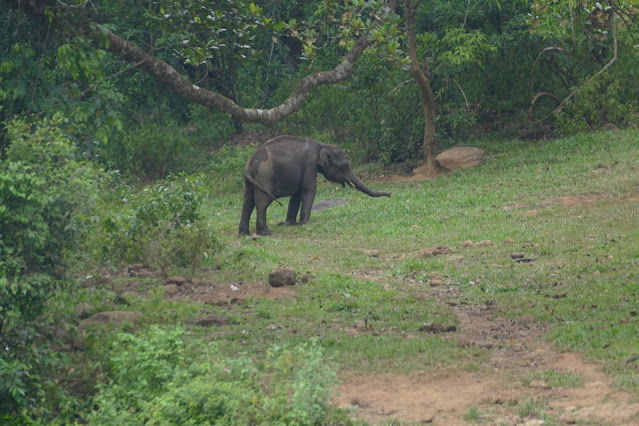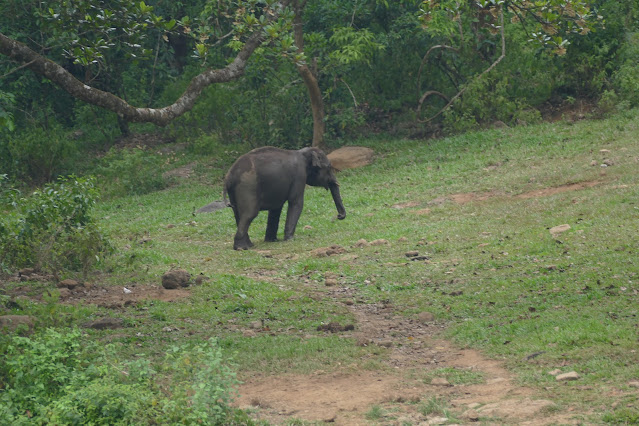I've been to Southern India twice now, but neither were birding holidays. The
first was to meet the family of my son's future wife and the second was to
attend their wedding in Kochi, Kerela.
However, the first holiday in 2023 was at a good time of year, in February and
in the middle of the trip I took off on my own for six days to Thattekad in
the Western Ghats and stayed in a homestay with a birding guide.
For the first eight days of the second holiday in 2024 we were in the city or
the nearby suburbs and we were often doing wedding related activities, so
birding was very much secondary and often impossible. However, following the
three day wedding we spent a week in Munnar in the Western Ghats and then six
days in South Goa. Still not full on birding but at least I had a
chance.
Unfortunately from a birding point of view, this holiday was in April and the
heat was blistering, usually above 35 degrees celcius and the humidity was
very uncomfortable. It was often four changes of clothing per day and multiple
showers. However, Munnar is the mountains and as such was 10 degrees cooler
than on the coast so that was at least bearable.
In 2023 I saw a total of 162 species whereas this year I managed 153. My India
list now stands at 219.
Below is a full list of all of the species which I have seen in India and the preceding posts go into a bit more detail.
Above photo: Glossy Ibis.
| Species | Locations with number of birds seen in brackets |
|---|---|
| Alpine Swift | Thattekad, Birds Song Homestay, Kerala (2), Thattekad, River Periyar Bridge, Kerala (2), Munnar, Eravikulam, Kerela (1), Munnar, Flower Valley Homestay, Kerela (5) |
| Ashy Drongo | Thattekad, Jungle, Kerala (2), Thattekad, Kalappara, Kerala (2), Thattekad, Salim Ali Bird Trail, Kerala (1) |
| Ashy Prinia | Betalbatim, Goa (2), Betalbatim, Beleza by the beach, Goa (3), Raynandar, Salim Ali Bird Sanctuary, Goa (1), Changaram Wetlands, Kerala (2), Munnar, Attukad waterfalls area, Kerela (1), Munnar, Eravikulam, Kerela (5), Munnar, Signal Point, Kerela (1) |
| Ashy Woodswallow | Tembim, Goa (1), Changaram Wetlands, Kerala (5), Thattekad, Birds Song Homestay, Kerala (1), Thattekad, River Periyar Bridge, Kerala (4), Munnar, Tribal village, Kerela (1) |
| Asian Brown Flycatcher | Thattekad, Urulanthanni, Kerala (1), Munnar, Attukad waterfalls area, Kerela (1) |
| Asian Fairy-bluebird | Thattekad, Jungle, Kerala (4), Thattekad, Sparrow Vale, Kerala (1), Thattekad, Urulanthanni, Kerala (1) |
| Asian Koel | Betalbatim, Goa (1), Betalbatim, Beleza by the beach, Goa (2), Colva, Goa (1), Raynandar, Salim Ali Bird Sanctuary, Goa (3), Kochi, Fort Kochi, Kerala (5), Mangalavanam bird sanctuary , Kerala (3), Thattekad, Kalappara, Kerala (1) |
| Asian Openbill | Betalbatim, Goa (1), Betalbatim, Beleza by the beach, Goa (1), Betalbatim, Betalbatim Lake, Goa (1), Anakulam, Kerela (1) |
| Asian Palm Swift | Kochi, Fort Kochi, Kerala (2) |
| Banded Bay Cuckoo | Thattekad, Urulanthanni, Kerala (2) |
| Barn Owl | Utarda, Goa (1) |
| Bar-winged Flycatcher-shrike | Thattekad, Urulanthanni, Kerala (5) |
| Black Baza | Thattekad, Sparrow Vale, Kerala (4) |
| Black Bulbul | Munnar, Pothamedu viewpoint, Kerela (2) |






















































